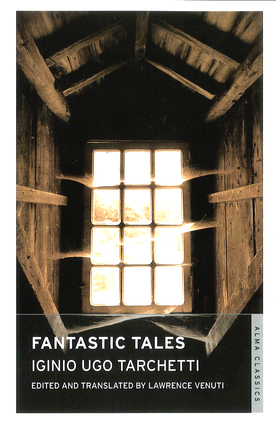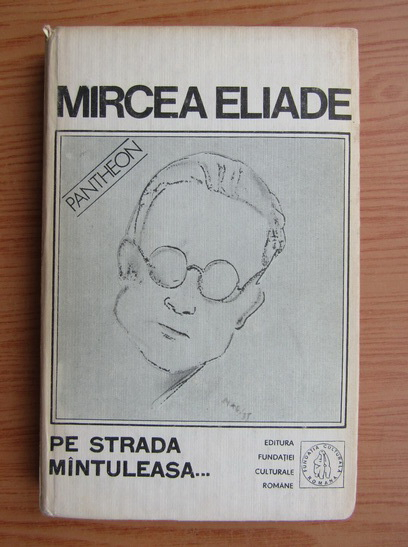

Noaptea de Sânziene (Paris: Ioan Cusa, 1971).Forêt Interdite (Paris: Gallimard, 1955).Mystic Stories: The Sacred and the Profane (Boulder, Colorado: East European Monographs/Bucharest, Romania: Editura Minerva, 1993).Two Strange Tales (Boston, Massachusetts: Shambhala Publications, 1986).
 Two Tales of the Occult (New York: Herder and Herder, 1970).
Two Tales of the Occult (New York: Herder and Herder, 1970).  Secretul doctorului Honigberger (Bucharest, Romania: Editura Socec, 1940). Şarpele (Bucharest, Romania: Editura Națională Ciornea, 1937). Domnișoara Christina (Bucharest, Romania: Cultura Națională Ciornea, 1936). Lumina ce se stinge (Bucharest, Romania: Editura Cartea Romănească, 1934). Isabel și apele diavolului (Bucharest, Romania: Editura Națională Ciornea, 1930). Selected fiction only: the original Romanian-language publications are scattered, and not all have been traced. Though he cannot comfortably be thought of as an sf writer – his use of tropes like Invisibility is usually associated with occult epiphanies, like that which drives "Youth Without Youth" – he is of importance for his speculative insights, and in specific to the fantastic tradition in Romania. The closest approach to sf in Eliade's fiction (much of it untranslated) may be Le temps d'un centenaire ( 1981 trans Mac Linscott Rickett as "Youth Without Youth" in Youth Without Youth and Other Novellas coll 1988), whose aged Romanian protagonist is struck by lightning at Easter 1938, awakens rejuvenated (see Rejuvenation) and perhaps Immortal, only to be chivvied for the secret of eternal youth by occultist Nazis during World War Two the tale was filmed as Youth Without Youth ( 2008) directed by Francis Ford Coppola.
Secretul doctorului Honigberger (Bucharest, Romania: Editura Socec, 1940). Şarpele (Bucharest, Romania: Editura Națională Ciornea, 1937). Domnișoara Christina (Bucharest, Romania: Cultura Națională Ciornea, 1936). Lumina ce se stinge (Bucharest, Romania: Editura Cartea Romănească, 1934). Isabel și apele diavolului (Bucharest, Romania: Editura Națională Ciornea, 1930). Selected fiction only: the original Romanian-language publications are scattered, and not all have been traced. Though he cannot comfortably be thought of as an sf writer – his use of tropes like Invisibility is usually associated with occult epiphanies, like that which drives "Youth Without Youth" – he is of importance for his speculative insights, and in specific to the fantastic tradition in Romania. The closest approach to sf in Eliade's fiction (much of it untranslated) may be Le temps d'un centenaire ( 1981 trans Mac Linscott Rickett as "Youth Without Youth" in Youth Without Youth and Other Novellas coll 1988), whose aged Romanian protagonist is struck by lightning at Easter 1938, awakens rejuvenated (see Rejuvenation) and perhaps Immortal, only to be chivvied for the secret of eternal youth by occultist Nazis during World War Two the tale was filmed as Youth Without Youth ( 2008) directed by Francis Ford Coppola. 
(For further comments on "the dialectic of camouflage", see Equipoise.) myth) from what might called the Kipple of the visible world. He himself argued that his use of various genres was "admirably suited" to his "central conception of 'camouflage' as a dialectical moment" in the structure of story and in the procreative uncovering of true story (i.e. (1907-1986) Romanian academic, in UK, Portugal and France from 1940, resident in the US from 1956, most famous as a philosopher of comparative religion, though he was a prolific author of fiction, much of it fantastic, from the publication of his first, precocious tale, "Cum am găsit piatr filosofală" (1921 Ziarul Stiintelor Populare si al Calatorilor), until the beginning of the 1980s Domnișoara Christina ( 1936 trans Ana Cartianu as "Miss Christina" in Mystic Stories, coll dated 19) is a book-length Vampire tale much early fiction, some of it fantastic, remained in manuscript until the twenty-first century.








 0 kommentar(er)
0 kommentar(er)
